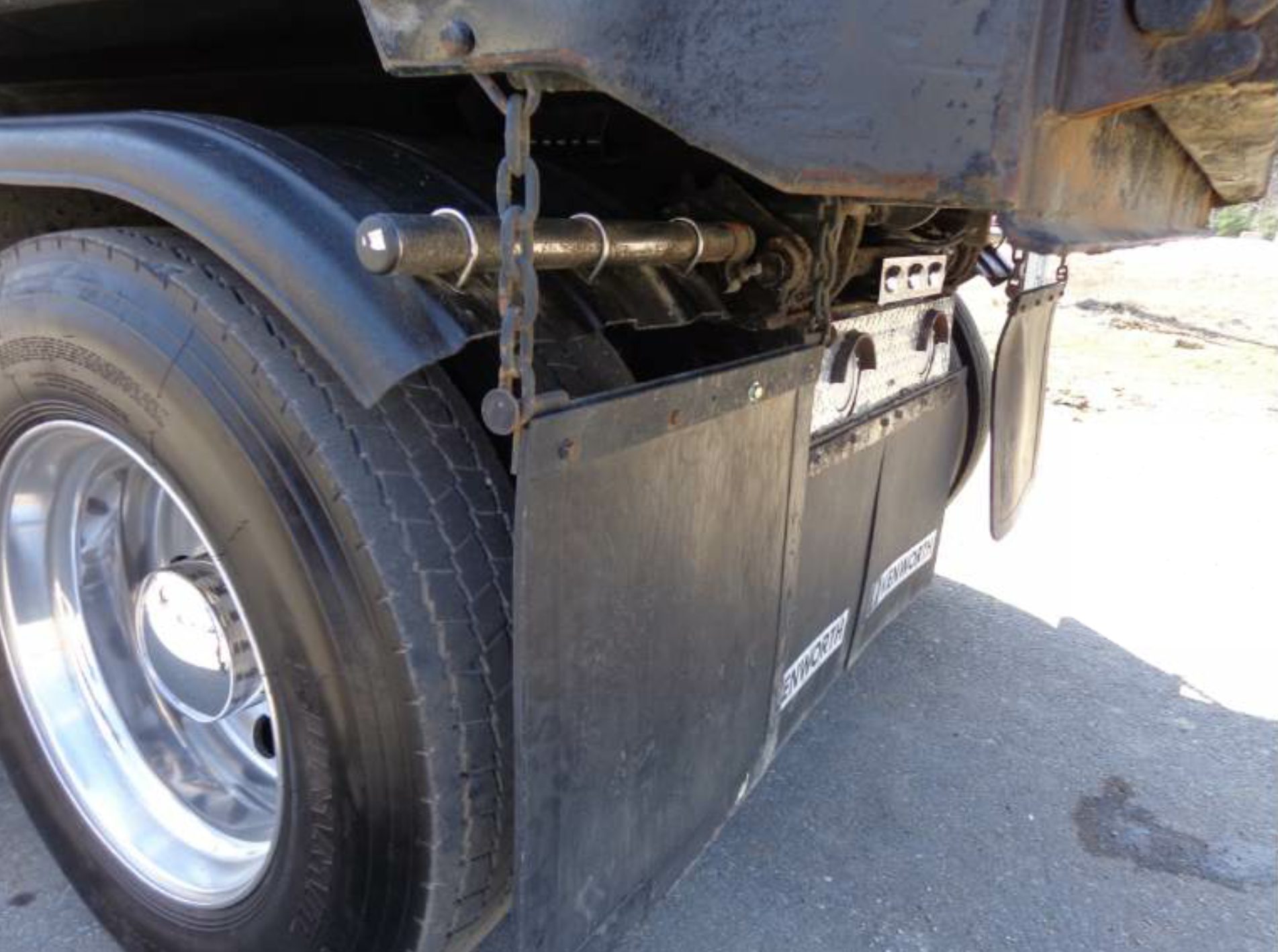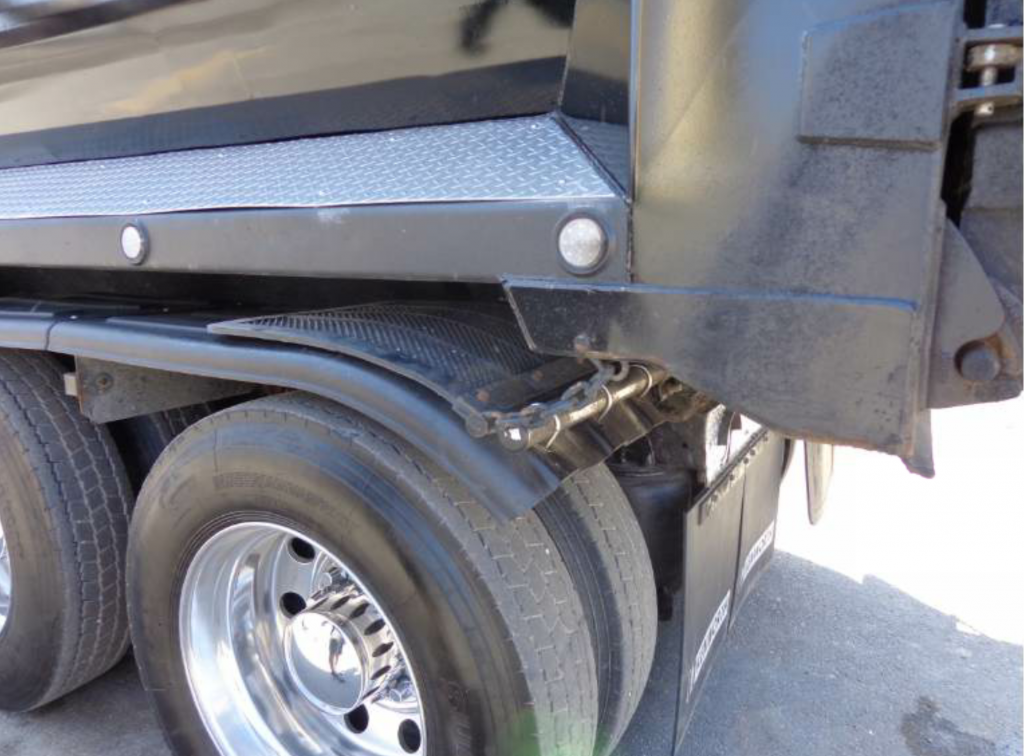Move Mud Flaps to Save on Asphalt Mix Delivery Costs
BY Sandy Lender

For the 2017 paving season, we dive into an essential area of project management for asphalt professionals: safe and timely delivery of hot-mix or warm-mix asphalt (HMA/WMA) to the paving site. During this eight-part series, you’ll get some back-to-basics best practices to share with veteran and new haul truck drivers, in addition to new tips, ideas, and case studies with logistics and technology that will enhance your bottom line. Producers have streamlined processes at the plant; contractors have nailed down best practices in the work zone. Now it’s time to harness the potential you’ve been missing when it comes to mix delivery and haul truck fleet management.
This installment looks at one idea to get the mud flaps out of your way.
When you back the haul truck to the paver, you don’t want a mud flap between the push roller and the truck tire. We pointed out in the first part of this series, Take a New Look at Haul Truck Maintenance, in the July edition of AsphaltPro, that individual state departments of transportation (DOTs) have different requirements of haul truck mud flaps—splash guards.
You won’t find guidance on the Federal Motor Carrier Safety Administration (FMCSA) site because it doesn’t dictate policy on this item, but your state DOT will have regulations for the height the flap can hang from the ground, how much of the back tire it must cover, and the angle of flying debris it is to block. Check with your DOT’s website to make sure you start out in compliance.

The chain is long and flexible enough to allow Murray to lay the mud flap on the fender where it doesn’t touch the push roller of the paver. This allows good contact between the push roller and truck tire for top quality paving. It also protects the mud flap from tearing or from getting caked with asphalt.
Once you get against the paver, the mud flap could get damaged or even torn off. That gives you two problems. First, it takes you out of compliance with the DOT. Second, when bits of polyurethane or rubber material fall into the hopper or onto the roadway, they cause problems in the mat.
Depending on the thickness of the lift, the problem could be anything from missed density that hinders your ability to get a bonus, to a pothole next week. The best thing to do is lift the mud flaps out of the way. Independent driver Steve Murray of Steve Murray Trucking in Hooksett, New Hampshire, shared a good idea to make this process quick and easy.
As you can see in the pictures on these pages, the mud flaps in the center of the tailgate are fixed in place. The mud flaps on the left and right hang by chains comprised of seven links each. The configuration allows the bottoms of the flaps to line up nicely.
When Murray gets to the paving zone, he parks the truck, engages the parking brake, and walks to the back of the truck to position the mud flaps out of the way. He lays them on top of the fenders. The length of the chains easily allows this. Then he returns to the cab and moves his truck to the place where he can begin backing into position.
Keep in mind, when a haul truck driver exits his cab, he must wear his personal protective equipment. Make sure the safety vest is clean and bright. Wear a hard hat to protect yourself in the event of an emergency. If you have safety gators, make sure you wear them to give yourself that extra flash of safety yellow that will alert everyone to that fact that you’re out of the truck.
Stay aware of your surroundings at all times and don’t dilly-dally. You’re not on a break. You’re getting the mud flaps out of the way, and then you’re getting yourself out of the way and back to the safety of the cab.
After discharging the load, you’ll drive to the area that’s been designated to clean out the truck body. At that site, you can pull the mud flaps back into position for legal operation on roadways again.
